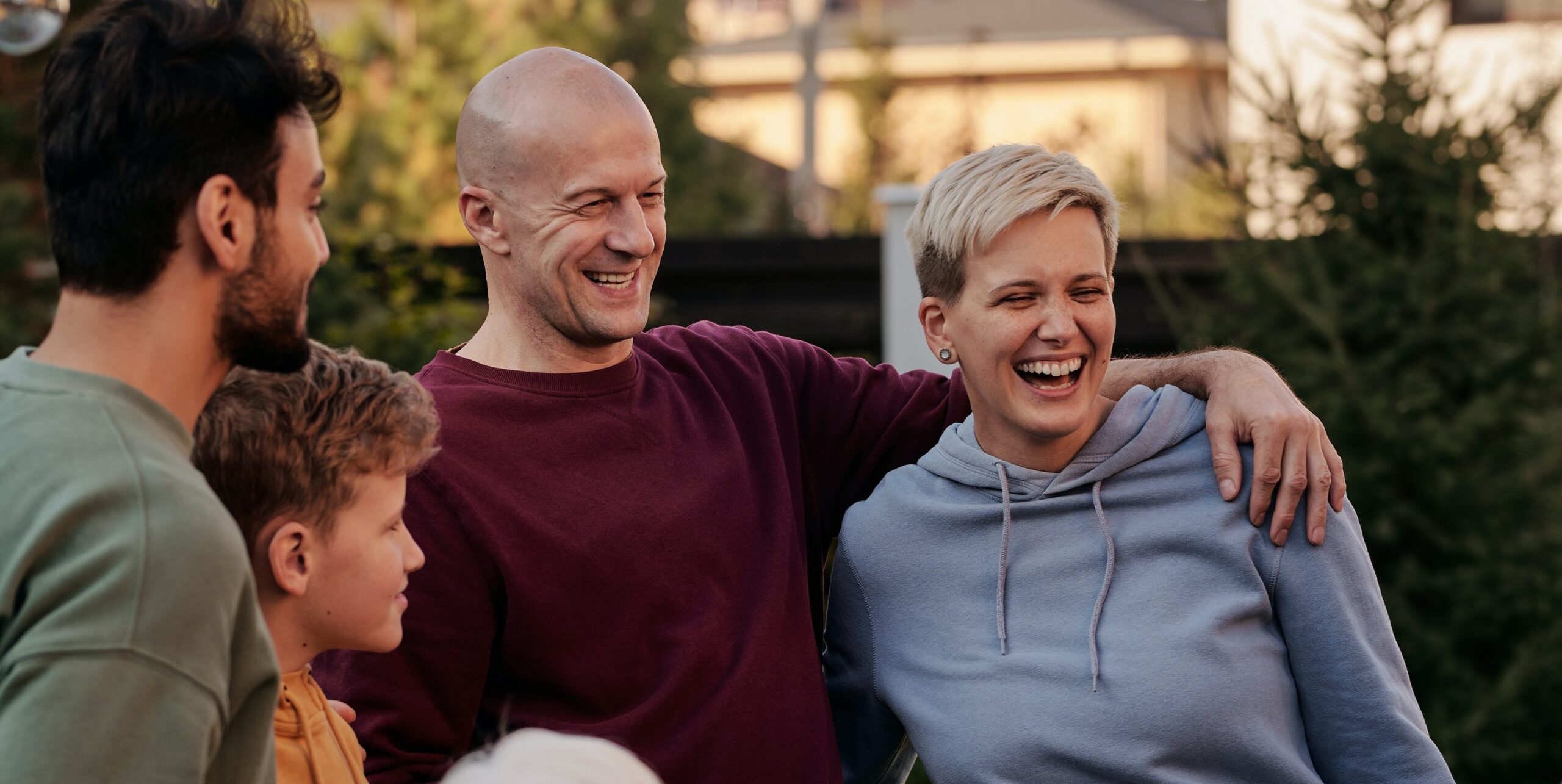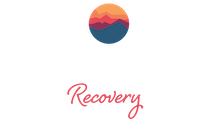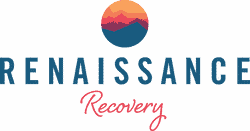Do you have a loved one or a close friend who’s struggling with addiction to drink or drugs? If so, you’ve maybe already started thinking about how to stage an intervention.
Today, discover when an intervention might be necessary in our intervention guide, and how to go about this the right way. You could be giving your struggling loved one the best gift they could get this year.
Need help getting addiction treatment?
What Is an Intervention?
The core goal of any intervention is to help the individual suffering from addiction to enter a suitable rehab facility, even if they initially seem resistant to the idea. This typically involved residential rehab, but sometimes an intensive outpatient program might be appropriate. This is usually suitable for less severe addictions, and for those with a supportive home environment. Failing this, inpatient programs are the norm.
It also pays to be absolutely clear about what you don’t want from an intervention. The intention here is not to gather your friends and family aiming to gang up on the loved one in need of help. Remember, they really do need your help, even if it’s just a helping hand toward rehab.
When you stage an intervention, then, you should focus instead on giving your loved one the chance to witness up close and personal the way their addiction is impacting others they care about. You should demonstrate throughout the intervention that this type of behavior will no longer be tolerated, but you should refrain from judgment.
Inarguably, an intervention is a delicate balancing act. You’ll need to present a united front, yet any form of ganging up will run completely counter to your goal. The last thing you want is to raise the person’s defenses and resistance.
So, by staging an intervention you can confront your loved one laboring under the yoke of addiction. Again, the goal here is to get your friend or family member into a treatment facility even if they’re not sold on the idea right away.
Now, how is it possible to tell if your loved one truly needs professional help to start down the road to recovery?
Common Signs It’s Time To Stage an Intervention
- You notice that their personal relationships are fraying
- Your friend or loved one starts losing interest in their normal hobbies and activities
- Financial irregularities start becoming apparent
- Deceptive behavior is commonplace
- You hear endless broken promises that your loved one will fix the situation
- Your loved one starts struggling professionally
- Physical changes manifest
- Their tolerance to drink or drugs is building
- Your loved seems intoxicated both socially and at work
- If you try to discuss the situation with your loved one, you meet with denial
1) You notice that their personal relationships are fraying
When someone is burdened with addiction, it’s difficult to properly maintain relationships and friendships. Addiction becomes all-consuming.
If you spot a marked change in your loved one’s social habits, try engaging them with some questions, non-confrontational in nature, aiming to establish the root cause of the issue.
You should keep a close eye on any breakdowns in your loved one’s various relationships. This might confirm your growing suspicions that it’s time for them to check into rehab.
2) Your friend or loved one starts losing interest in their normal hobbies and activities
A classic marker of addiction that’s careering out of control is when someone starts losing interest in the activities and interests they once enjoyed. When addiction seizes the upper mind, maintaining a hobby, even an enjoyable one, can seem like too much hard work. Previously enjoyable activities start feeling burdensome instead.
As with many of these changes, if you notice them in isolation, it could be nothing to worry about. When you start seeing multiple signs, though, especially when combined with your existing suspicions about the person’s addiction, it could be time to explore offering more direct assistance.
3) Financial irregularities start becoming apparent
Addiction routinely precipitates money problems. If your loved one starts missing rent or car loan payments, begins asking for loans, or appears in generally poor financial shape, this could indicate that addiction is the root cause.
If your friend or family member is especially wealthy, it might be tougher to pick up on this form of financial duress. Instead, keep your eyes peeled for any uncharacteristically reckless expenditure.
4) Deceptive behavior is commonplace
Deception often becomes the norm when someone is addicted to a substance but wants to conceal this from friends and family, usually from a sense of shame.
This deception comes in many guises. If your loved one is a heavy drinker, they might dispose of their empties outside the home to avoid triggering commentary about consumption. In the case of someone abusing drugs, they will typically go to enormous lengths to hide any paraphernalia. Those addicted to prescription drugs will frequently engage in doctor-shopping, and they’ll often keep their medication out of plain sight.
Perhaps you get a feeling your loved one is being less than truthful about their plans and whereabouts.
Deceptive behavior of any nature, when sitting alongside suspicions about addiction, are an obvious red flag.
5) You hear endless broken promises that your loved one will fix the situation
Now, maybe you’re lucky and your loved one doesn’t deny they have a problem, but they are prepared to admit to being addicted.
If, though, you’re sick and tired of listening to broken promises about more moderate consumption, what can you do?
Well, rather than blaming someone in the throes of a progressive disease like addiction, someone who desperately needs help, it could finally be time to start making concrete steps arranging an intervention.
6) Your loved one starts struggling professionally
For someone in the grips of any addiction, holding down a job becomes problematic.

From routine absences – usually on a Monday or Friday – to lengthy spells off work and even outright job loss, professional problems are an inevitability if someone is using drink or drugs heavily.
Take action before it’s too late and get your loved one back on track.
7) Physical changes manifest
Does your loved one’s appearance seem to have deteriorated lately?
Whether it’s bad breath and bloodshot eyes or shaking hands and a drastic dip in attention to personal hygiene, when physical changes manifest, addiction could have set in deeply.
8) Their tolerance to drink or drugs is building
An increased tolerance to drink or drugs is another very clear indication that addiction is worsening.
If your loved one is drinking more but doesn’t seem to be outwardly intoxicated, or they start heading for prescription refills more frequently, this could be due to heightened tolerance as a result of deepening abuse of their substance of choice.
9) Your loved seems intoxicated both socially and at work
Is your loved one demonstrably under the influence, both socially and at work? If so, this is a strong sign of a problem spiraling out of control.
Acute addiction leads to an almost uncontrollable urge for the person to self-medicate.
Do not ignore signs like this.
10) If you try to discuss the situation with your loved one, you meet with denial
Have you tried broaching the subject of your loved one’s addiction without success?
Maybe your loved one insists that they don’t have a problem. Denial is commonplace when someone is addicted to drink or drugs.
If you continue to confront your loved one with evidence of any of the flashpoints above and you’re met with persistent denial, it could be time to initiate a more formal and fruitful discussion.
On that note, it’s time to outline staging an intervention the easy way.
How To Stage an Intervention for Alcoholism or Drug Addiction
If the above warning signs suggest your loved one may benefit from an intervention, you should be clear about the immediate goal: to get the individual into a treatment center. The long-term goal is likely sustained, long-term recovery, but that part of the journey is out of your hands. However, having a step-by-step intervention guide at your fingertips can also be incredibly helpful in getting your loved one to that goal.
Recovery starts with a single step and a request for help, though. If your loved one is finding this step impossible to make, you can help them.
As with most things in life, planning is critical and the first thing you should get started with. Follow the intervention guide below for best results:
1) Form a planning group so you can discuss who will be in the final intervention group
In the early stages of planning, there’s no need to include every conceivable attendee.
Initially, form a small group including the person’s nearest and dearest. You can get a great deal of the early planning in place as well as formulating a full list of those intending to help with the intervention.
At this point, call a quick and informal meeting including everyone except the addicted individual.
2) Decide whether or not to include an intervention specialist

In this initial meeting, table the idea of engaging an intervention specialist.
If you all decide this is a prudent course of action, start some research, both online and offline. Seek advice from your healthcare providers. Solicit recommendations from friends you know who have experienced this situation personally.
Schedule another meeting so you can pool your resources. Decide upon the best intervention specialist and make the requisite arrangements.
3) Firm up your overarching message to the addict
All members of your intervention group should fully grasp what they plan to say before the day of the intervention arrives. This is not the time to go off-piste.
Generally, use “I” statements rather than “You” statements. By refraining from the more confrontational “You did this, you did that…”, you can still make your point but in an indirect and non-confrontational manner. The message won’t be diluted, but it might have more chance of sinking in when stripped of accusation and blaming.
Group members should be free to make personal statements outlining how the behavior of the addict has impacted their lives.
The underpinning message should also be unifying: it’s not only possible for your loved one to successfully recover from addiction, it’s the only workable option remaining. Be certain to reiterate that you’ll help them every step of the way.
While an intervention is not an enjoyable social gathering, you can still ensure that the atmosphere remains positive and upbeat. You need to be solution-focused rather than dwelling on the problems.
4) Don’t neglect practice
Practice meetings during the run-up to the intervention are a smart move and can help you to sharpen up for the main event.
While it might seem counterintuitive, it’s not always best to lead off with the people closest to the addicted individual. Sometimes, they could already be accustomed to batting away complaints from close family members.
A strategy worth considering is for someone with a lesser role in the addict’s life to step up to the plate first. By learning that someone less removed from their situation is being affected, this can be enough to get the intervention started on a positive footing.
Use practice meetings to hone what you’ll say, and the order in which people will speak.
It’s now time to get down to the mechanics of the intervention itself.
5) Set a time and place for the intervention
Firm up your location along with the time and date of the intervention.
It’s vital to catch your loved one when they’re sober to maximize the chances of success. Few interventions bear fruit when the addict is intoxicated.
You should select a private place that’s distraction-free and comfortable.
Depending on the number of attendees, you should allot several hours for the intervention.
6) Keep your expectations reasonable
With the day of the intervention on the horizon, you should prepare for the worst outcome – refusal to engage – while remaining positive that your effort will pay off. If they do, your loved one could even feel so relieved that they agree without resistance to head directly to a treatment center.
The worst possible outcome is complete hostility and non-compliance.
More likely is that your loved one will fall somewhere between these two extremes. It’s here that the intervention specialist can have valuable input.
7) Stick with the plan
An intervention is no place for a show of spontaneity. It’s paramount that everyone adheres closely to the planned structure.
Everyone will have a chance to show their love and concern along with specifics about how they have been affected by the addict’s behavior. Concrete examples are always better than vague generalities. Keep things tightly focused.
If the response is positive, you should be primed to relocate your friend or family member to a treatment center right away.
8) Be fully supportive throughout the intervention process
Try your best to leave anger and frustration outside the intervention room. Rolling out negative emotions will be unhelpful.
If you remain supportive and in control, you’ll be able to better communicate your message without weakening its content.
9) What happens next?
You should already have a firm plan for the intervention yielding dividends. You can then take immediate action and get your loved one’s recovery started.
How about if things don’t go to plan, though?
10) What happens if the intervention fails?
Not every intervention will be a roaring success. If you accept this from the onset, it will make it easier if things go awry.
Since addiction is a disease, and an irrational disease at that, logic will not necessarily apply to what unfolds on intervention day.
To end on a positive note, though, here are some things you can to do minimize the likelihood of failure on intervention day:
- Never attempt an intervention when the addict is intoxicated
- Refrain from harassment and confrontation
- Stick to the planned intervention structure
- Remain solution-oriented
- Formulate a contingency plan
- Types of Intervention
- A trained intervention counselor can guide you to the type of intervention to get your loved one to rehab successfully.
- There are two main types:
- The Johnson Model of Intervention
- This model of intervention was created by Vernon Johnson.
- With this type of intervention guide, the family confronts the addicted person in one event.
- Every family member must be on board. If the addicted person has an ally like a friend who will put them up on their couch or pick them up from treatment, the intervention won’t work.
- Everyone must be onboard, family and friends alike.
- The danger of this approach is that the addicted person realizes that everyone has been talking about them and can feel conspired against, hurt, betrayed, shameful, and embarrassed.
- This is better than losing your loved one to addiction, though. It’s crucial to consider that if the intervention guide is successful and your loved one agrees to treatment, there could be a level of distrust on their return from rehab.
- It pays, then, to be aware of the pros and cons of performing this type of intervention where you collude with other family members and friends.
- It’s worth the risk if you’re going to save a person’s life, but there are other methods of interventions that your guidance counselor can advise you on.
- Invisible Intervention
- Invisible intervention is where a trained intervention counselor works behind the scenes with family members and coaches them on how to interact with their addicted loved one.
- This type of intervention guide aims to facilitate the addicted loved one to decide to seek treatment on their own. This method means playing a longer game, unlike the previous method.
- With invisible intervention, a person is far more likely to stick with treatment because they have decided that they are ready and willing to tackle the challenge of getting sober.
- This method helps to mend the family system in a way that supports the person’s recovery process. It’s also a non-confrontational method that is less likely to result in resentment.
- The powerful aspect of this type of intervention guide is that it encourages family members to view their addicted loved one with empathy. When you show and express empathy for someone, the learning part of their brain ignites. In contrast, when you’re mad and yelling and punishing someone, this arouses their emotional brain.
- The trick is to approach them in a manner that creates a favorable atmosphere to get them on the side and get them to make the decision that they want to get and stay clean and sober.
How to Stage an Intervention for a Friend
If you know that your friend or loved one has an addiction problem and knows they need help, it may be time to set up an intervention. These can be delicate situations and it is common for your friend or loved one to get defensive in these situations. That said if you can get other friends and family members involved, it may show them that their problem is causing consistent issues across their entire personal life and touching everyone they love.
While it can be helpful to have others there to show support, this can easily be misinterpreted by the person as people ganging up on him or her. The best thing you can do to make an intervention go as smoothly as possible and to set your friend up for success is to reach out to an addiction professional.

Getting Help with Renaissance Recovery
If you need some advice about intervention for drug addiction, or you need to speak about rehab options for a loved one, we’re here for you at Renaissance Recovery.
For immediate help and an expert intervention guide, call us today at 866.330.9449.



